Sony WF-1000XM5 vs Apple AirPods Pro: who gets to whisper in your ears?
Sony's top-tier vs Apple's absolute best in-ears. What's it gonna be?
We may earn a commission if you make a purchase from the links on this page.
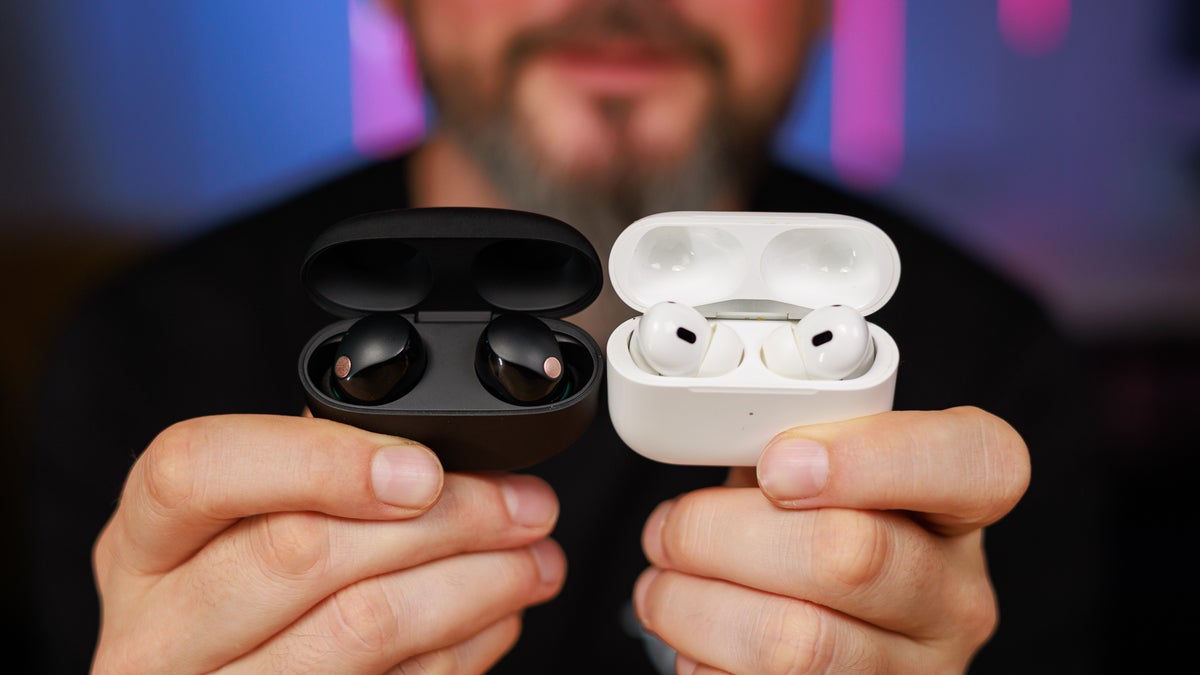
It was 6 years ago when Apple decided to join the "truly premium" earphone space with the AirPods Pro. An updated, in-ear version of the well-known AirPods, now with active noise cancelation, transparency pass-through, and pinch controls on the stems. Since then, the AirPods Pro have been upgraded once, to a gen 2 that refined the sound. We are expecting a possible third generation — maybe this year, maybe next, but for the time being — those are the AirPods Pro.
Sony started its premium in-ear line a bit earlier — the first WF-1000X was launched in 2017. Since then, it has been updated once every two years, with 2019 bringing us XM3, then XM4 in 2021, and XM5 in 2023. And yes, it looks like we are due for a refresh now, with a possible Sony WF-1000XM6 release by the end of 2025. But again, for the time being — those are the premium Sony earbuds.
Now that's been cleared, it's time to measure them up — these are very different types of earbuds. Which one is... "better"? Sound, fit, comfort? Let's dive in!
Sony WF-1000XM5 vs Apple AirPods Pro in a nutshell:
- Stemless vs mic stem bud design
- 8.4 mm vs 11 mm dynamic driver
- EQ and audio customization vs "you get what you get"
- Touch controls vs pinch stems
- Sony 360 Audio vs Spatial Audio
- Sony has DSEE Extreme audio upscaling
- Bluetooth dual-device multipoint vs iCloud multi-device
- Three color options vs one white color
- Relatively small carry cases
- IPX4 equivalent ingress protection vs IP54 on buds and case
Sony WF-1000XM5 specs
| Sony WF-1000XM5 | AirPods Pro | |
|---|---|---|
| Color options | Black, Pink, Silver | White |
| Audio | SBC, AAC, LDAC, LC3 Sony DSEE, 360 Audio, Dolby Atmos | SBC, AAC Apple Spatial Audio, Dolby Atmos |
| Noise Cancelation | ANC, Transparency Adaptive ANC | ANC, Transparency |
| Connectivity | Bluetooth 5.3, multi-device, Fast Pair, Swift Pair | Bluetooth 5.3, Magic Pair (iCloud) |
| Battery life | Up to 8 hours Case adds ~16 hours ANC On | Up to 6 hours Case adds ~24 hours ANC On |
| Ingress protection | IPX4 on buds | IP54 on buds and case |
Sony is making full use of the Bluetooth 5.3 protocol and its Bluetooth LE capabilities by including the new-ish LC3 codec for clearer voice calls. Its buds last longer on a single charge, but the case itself has a bit less juice. Apple's AirPods Pro stick to AAC for audio and SBC for calls — the old codec that sounds garbly and warbly while calling (though the H1 chip inside does seem to perform some magic to clear it up a little). As for ingress protection — the Sony buds are protected against sweat and the occasional splashes. The AirPods Pro and their case have a bit more protection — the 5 in IP54 standing for "dust-protected" (not dust-tight).
Sony WF-1000XM5 vs AirPods Pro design and colors
These take two very different approaches to design. The Sony WF-1000XM5 are literally... buds — no stems, nothing poking out. They also come with memory foam tips, instead of the silicone tips that most others use.
For that, their fit and feel may not be optimal for many users. You need to squish the memory foam good before inserting them, and a bud tip that's a bit too big for your ears may end up pushing the earbud out. Thankfully, Sony now includes a total of 4 sizes in the package to cast a wider net. You can also replace the tips with 3rd party silicone ones, however, the foam tips holding on to your ear canals is part of the design. When trying them with silicone tips that I otherwise use on other earbuds, the right Sony WF-1000XM5 was constantly slipping out of position.
The AirPods Pro gen 2 have a bit more universal design and it seems like more users are reporting that they stay put in their ears. They come with three sizes of tips and fitting a 3rd party option may be challenging since they have their own mounting clip — just Apple being Apple.
The other design quirk that is definitely not optimal in the Sonys is the touch controls. Well, tap controls to be more accurate. Tap once for play/pause, twice for forward, et cetera. Most absurdly — tap multiple times to adjust volume. Yes, poking on that bud that goes right into your ear. For comparison, Google's Pixel Buds Pro 2 are also tiny little buds, yet they accept swipe controls over their surface area, which feel less uncomfortable to use.
Apple makes use of those stems on the AirPods Pro gen 2 by incorporating both pinch and swipe controls on them. This is far superior, though some people still prefer stemless buds due to the sheer look of them.
The Sony case is pretty compact, almost pill-shaped. But it has a flat bottom side so it can stand upright, if that matters to you. But the slightly more angular design and matte finish feels a bit more grippy. The AirPods Pro case is well-known and praised for its sleek shape and size — it very easily slips in and out of pockets... and out of your hands, maybe.
Sony WF-1000XM5 vs AirPods Pro sound quality
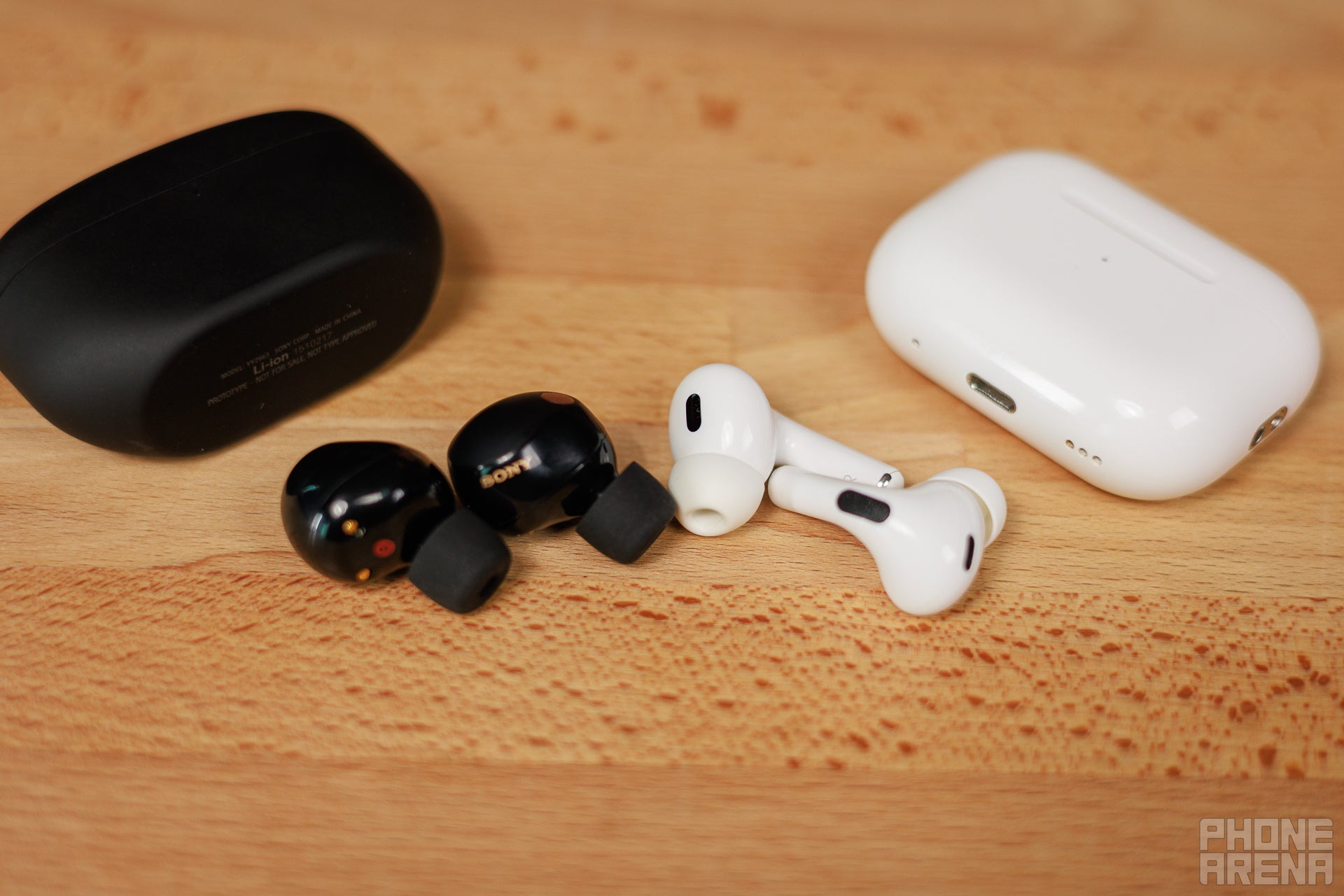
The Sony WF-1000XM5 definitely have a sound of their own. They like their bass and are not afraid to show it, and they have a bit of sizzle in the high end that may sound a bit too sibilant depending on song, genre, and mix. In general, you can dial these to taste with the app — they can sound huge and energetic, even if not an audiophile's first pick. Their instrument separation is also pretty good, though I feel it's a notch below the AirPods.
The AirPods Pro, in their own right, have a very good sound, though more balanced. Apple likes to cast a wide net, and the AirPods Pro deliver just the right amount of "safe" frequencies — it's rare you will hear anything poking or annoying. Well, they do like a bit more bass, but that's the case with modern consumer audio — we have collectively voted with our wallets that we like a bit of thump to our music. They also have no way to adjust their EQ (save for a very limited menu in iOS settings), they have an internal adaptive EQ that will "listen" to microphone data from within the bud and adjust the equalizer to match the acoustic space inside your ear.
Sound staging and instrument separation is a bit wider on the AirPods, while the WH-1000XM5 still have a bit of that "in your head" feel (not as bad as the XM4s), presumably because the memory foam tips really need to get in there and latch on.
The good news on the Sony end is that the in-app EQ is pretty good. Not super-elaborate, you only get 5 bands for the mids and highs, and anything in the low-end is adjusted with a Clear Bass slider, which commands the thump and resonance.
But even better, there's a Your Equalizer feature for those that don't know what the bands do, or don't want to bother. Basically, the app will suggest 5 presets that you can audition and choose which one sounds the best to you. Then, you are presented with 5 extra tune-ups for that main preset. At the end, your chosen sound will be saved as a Custom EQ preset, and you can further adjust the bands and Clear Bass slider if you wish to.
Sony's WF-1000XM5 also have DSEE Extreme as a selling point. It supposedly upscales low bitrate audio, though I am not going to sit here and pretend like I noticed a huge difference with it on. Maybe a pinch of wider dynamics — maybe.
360 Reality Audio and Spatial Audio
Sony was first to the 3D audio game with its 360 Reality Audio. You can enjoy this on Amazon Music, Tidal, and nugs.net, and only on tracks that have been mastered for 360 Reality Audio. It sounds good — not superior to a well-mastered stereo track, just a different way to experience your favorite tracks.
Apple, of course, also has Spatial Audio and a number of albums mastered for Spatial Audio over at Apple Music, even Apple TV shows made with Spatial Audio in mind. That said, you can "Spatialize" any audio source with a toggle within iOS. The results may vary — some YouTube videos gain a much more pleasant "in the room" experience, while some music tracks that were not made for Spatial Audio may bury some instruments or get weird resonances.
In general, both of these technologies work and sound very well, but Apple's is a bit more accessible.
Sony WF-1000XM5 vs AirPods Pro Noise Cancelation
These earbuds are the kings of active noise cancelation. With excellent isolation (the memory foam on the WF-1000XM5 works double-time here) and excellent algorithms on top, these drown out a lot of the daily hum-drum.
When it comes to transparency, the Sonys get the job done, but you can kind of still hear that you are getting the outside world filtered through earbuds. The AirPods Pro gen 2 have a very "not even there" feel when you activate pass-through mode. At the end of the day, it's impressive, but again — the Sonys get the job done pretty well. Voices and noises come in with proper directional and loudness representation, so you know what's going on around you.
Sony WF-1000XM5 vs AirPods Pro connectivity
Connecting the Sony WF-1000XM5 to an Android phone or Windows laptop is a breeze thanks to Fast Pair and Swift Pair. They also support multipoint, so you can stay connected to two devices at a time. And, with a wide variety of codecs, you can squeeze the best quality from the device you are currently on.
Apple's AirPods Pro gen 2 have the Magic Pair feature — open the lid next to any of your iDevices and a prompt lets you connect. From that point onward, any device that's logged into your iCloud will be paired to these AirPods. Being an Apple device, they only support AAC for music.
Sony WF-1000XM5 vs AirPods Pro battery life
The Sonys can squeeze a bit more time out of the buds themselves — up to 8 hours on a single charge, with ANC on. The AirPods are cited as hitting 6 hours with ANC. While you can improve the battery life of the WF-1000XM5 by turning off ANC (around 4 hours extra), doing so with the AirPods Pro doesn't seem to offer such a drastic improvement. Presumably because the algorithms keep working to keep that Adaptive EQ inside working at all times.
When it comes to extra charge from the cases — the Sony case gets you 16 hours of extra use (ANC on). The AirPods Pro case has more juice — around 24 extra hours. Both cases support wireless and wired charging.
Sony WF-1000XM5 vs AirPods Pro - conclusion
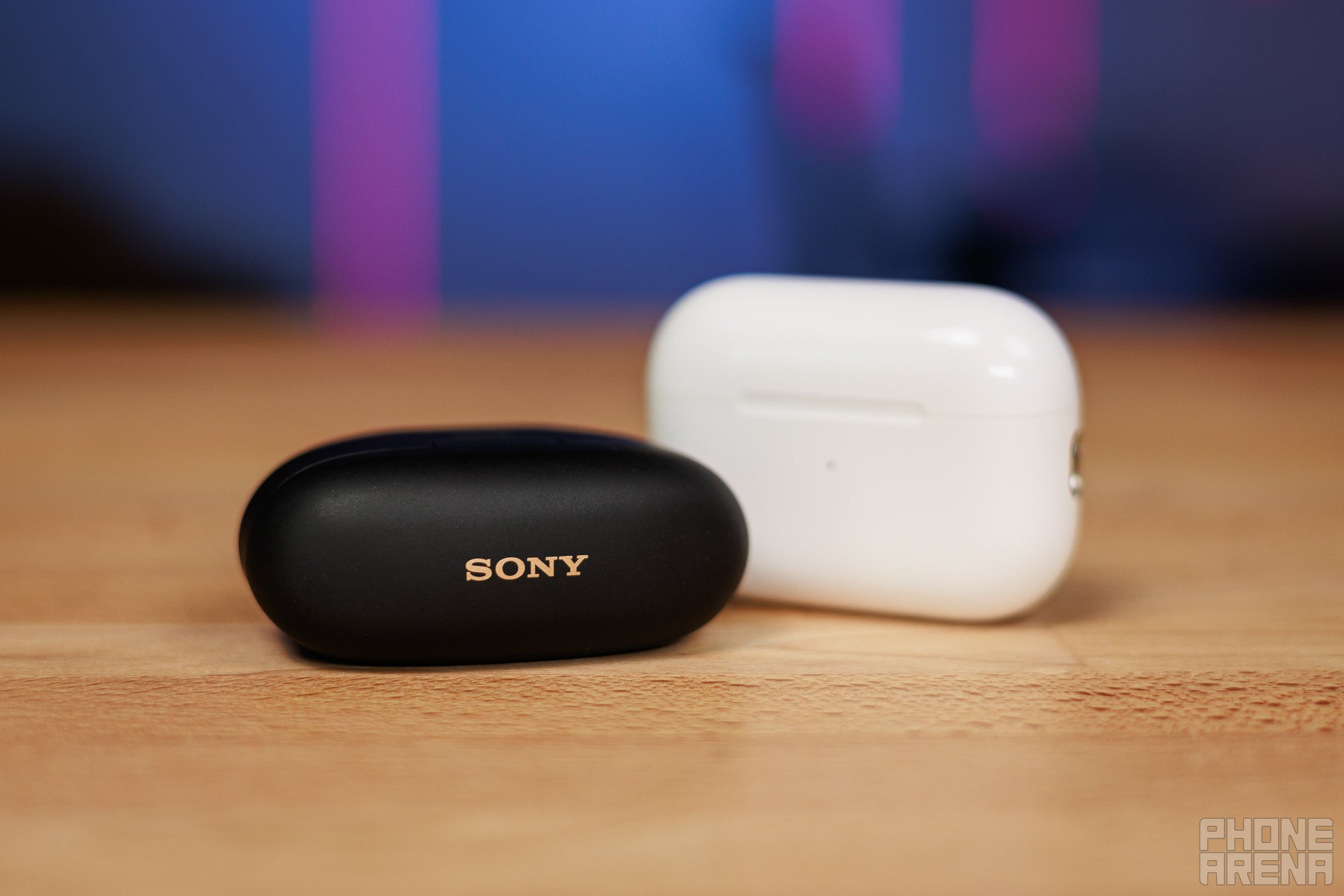
The Sony WF-1000XM5 is a bit of a risk. For one, the design and foam tips still may not fit every ear out there. Secondly, they have a signature Sony sound to them, which you can't fully dial out. You can adjust it to taste, and — as I said earlier, I enjoy their energy and punch, but you can't dial out the sibilance or reliance on deep bass if you don't like it.
So, do I not like them? On the contrary — personally, I do. However, when it comes to recommending them, I would always mention those two risks.
The AirPods Pro gen 2 have a much more balanced sound out of the box, which will make most if not all users happy or, at the very least, pleased. They also have a bit more traditional fit that should stay in most ears. Plus, if you have more than one Apple device on hand, the AirPods Pro seem like the right choice — Magic Pair is just so convenient, it's hard to look back (even if Bluetooth multipoint is "kind of good").
However, if you are on an Android phone, I'd say paying for a set of AirPods Pro is not worth it — you just don't get half the features that are included in the price (Spatial Audio, Magic Pair).
Follow us on Google News

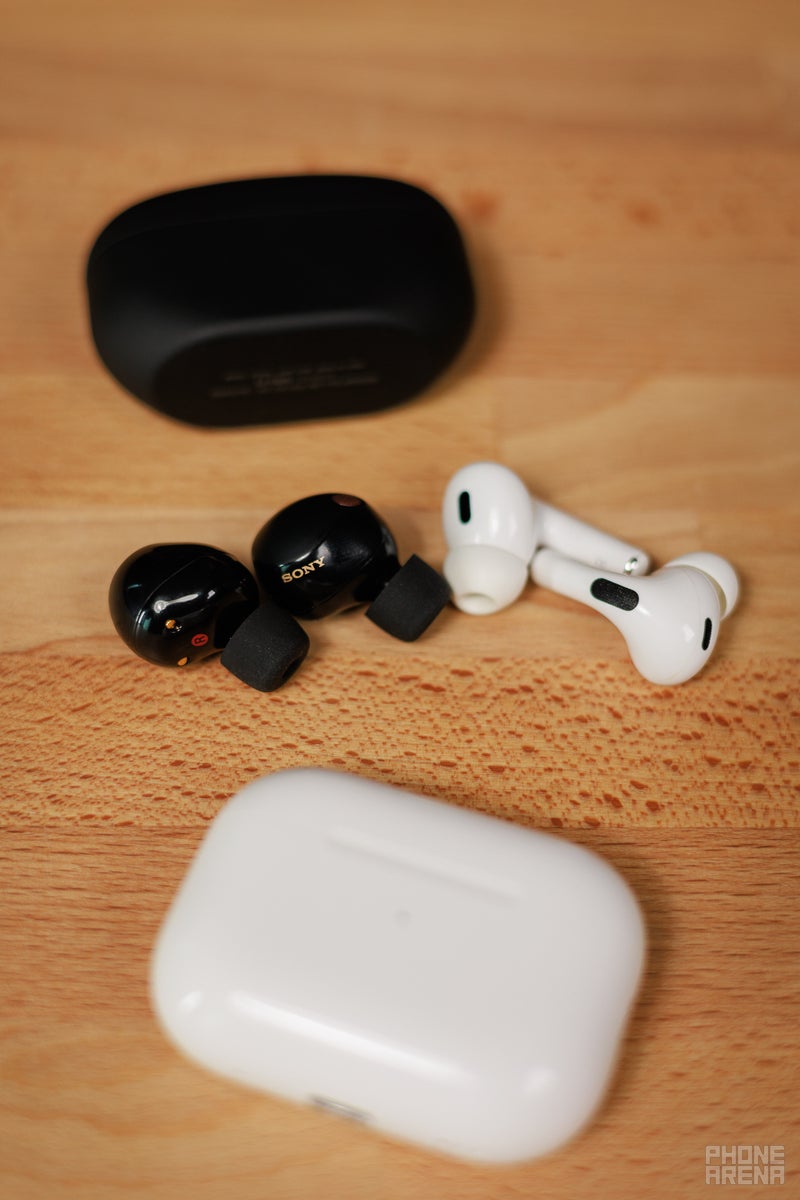
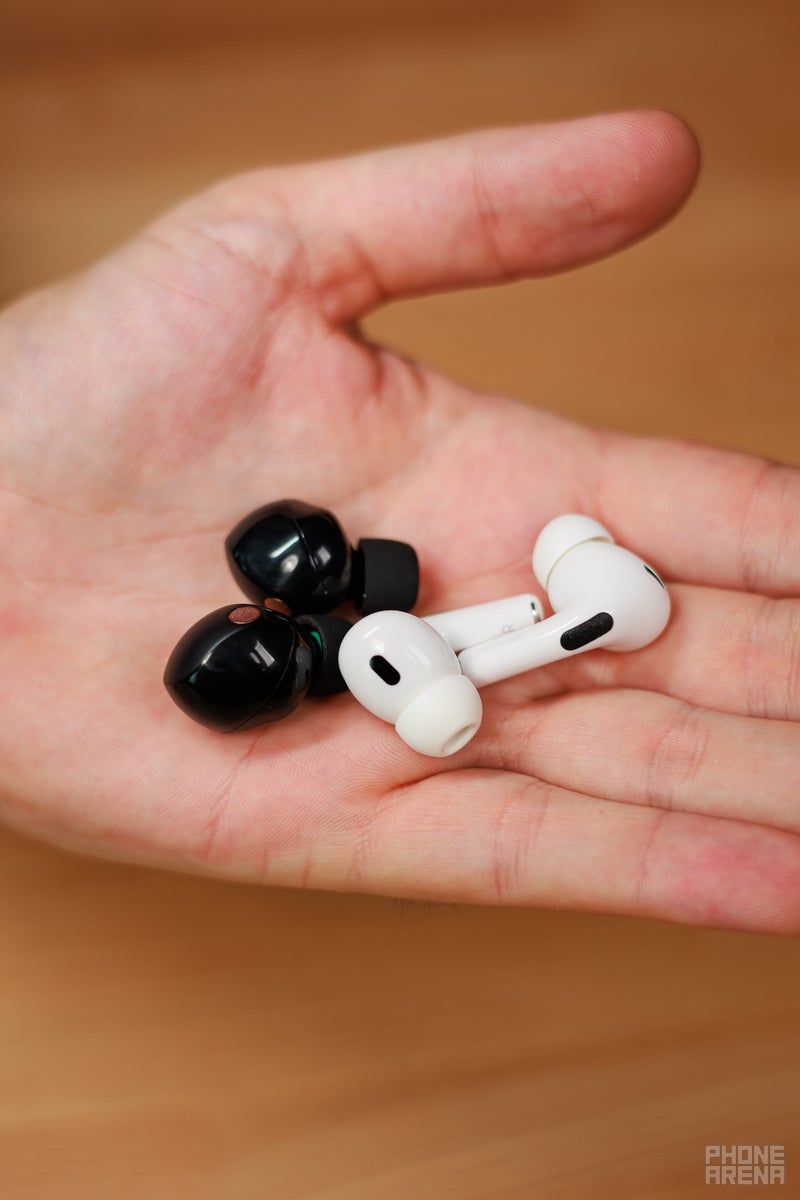
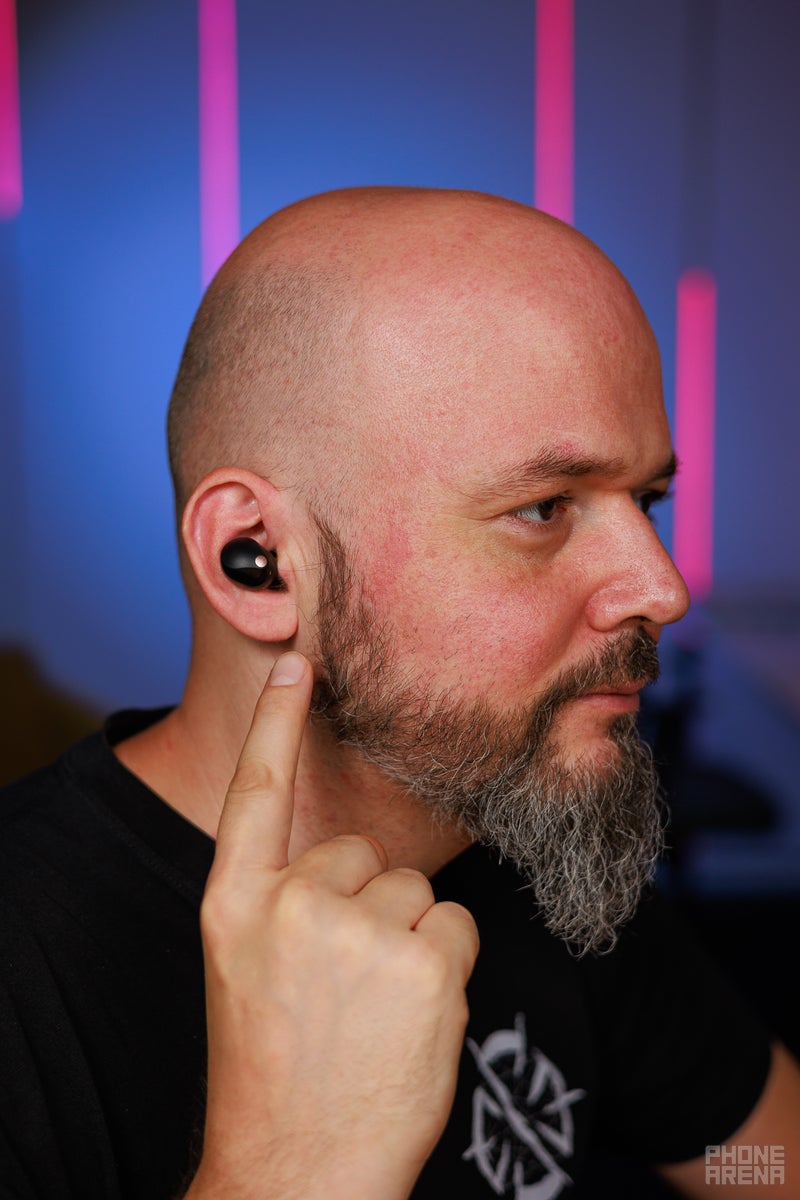
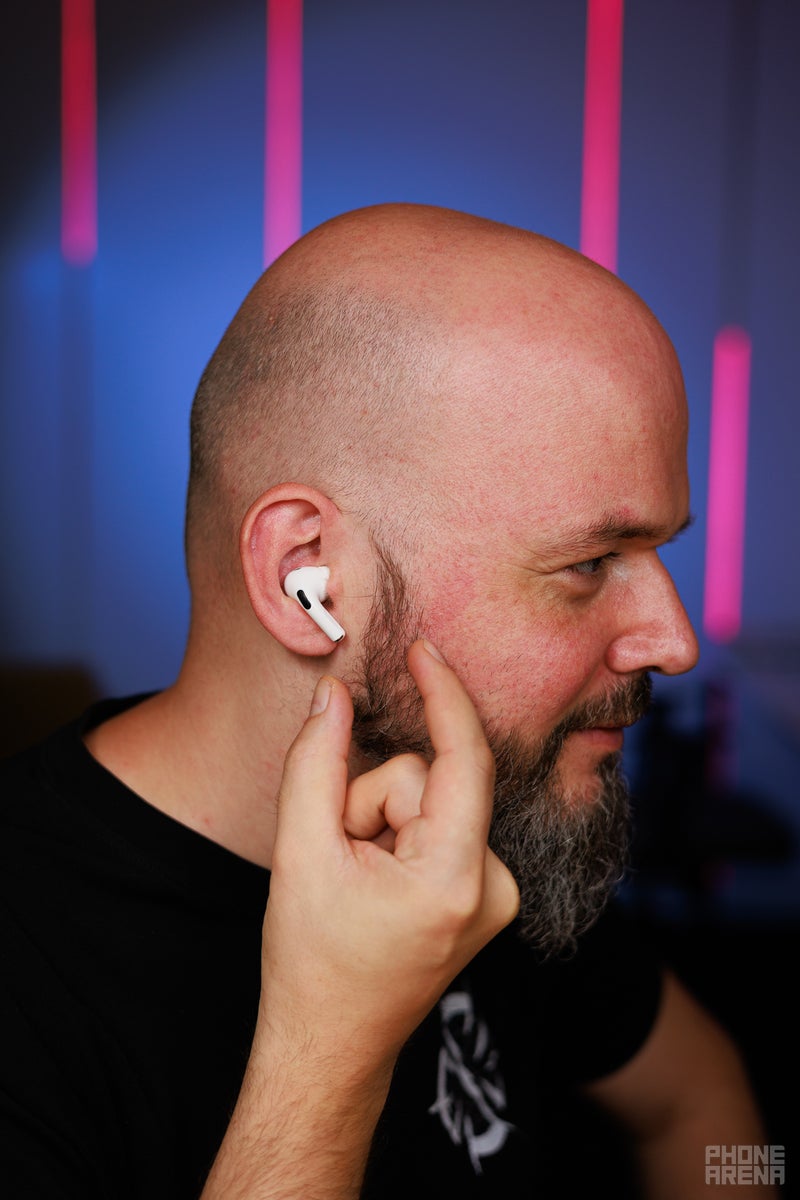
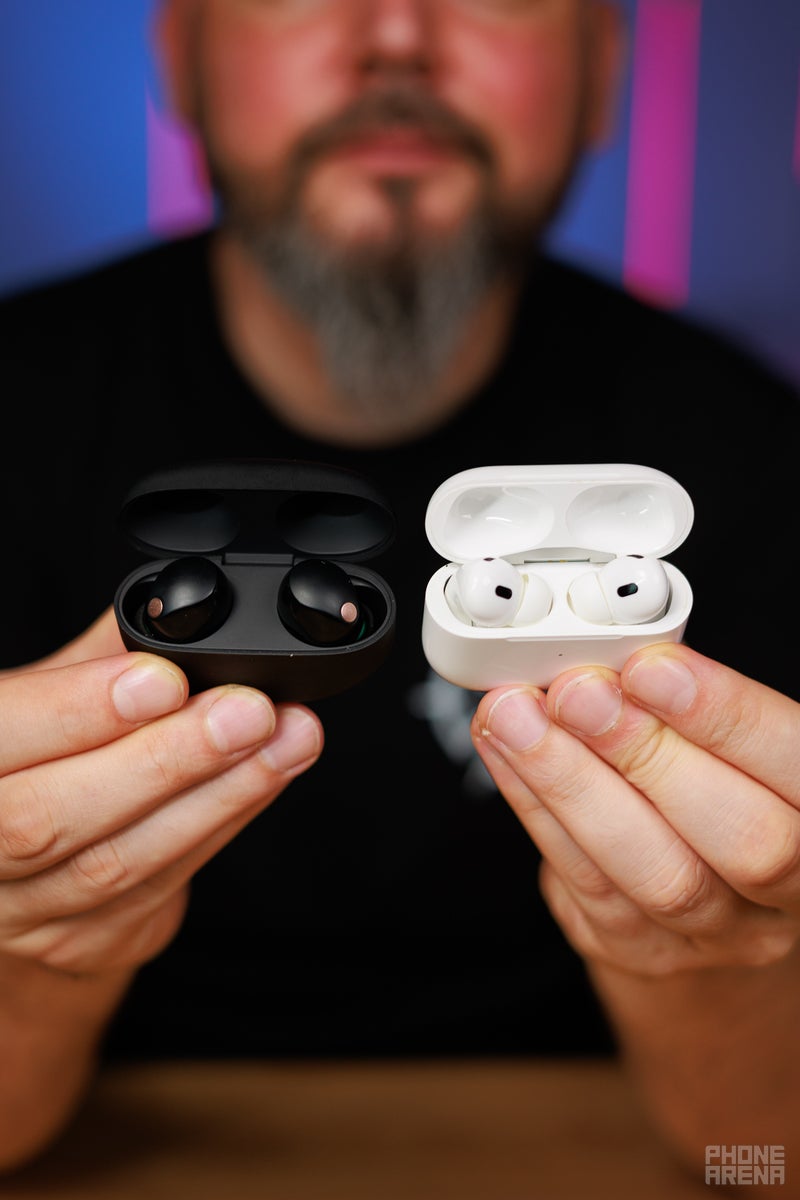
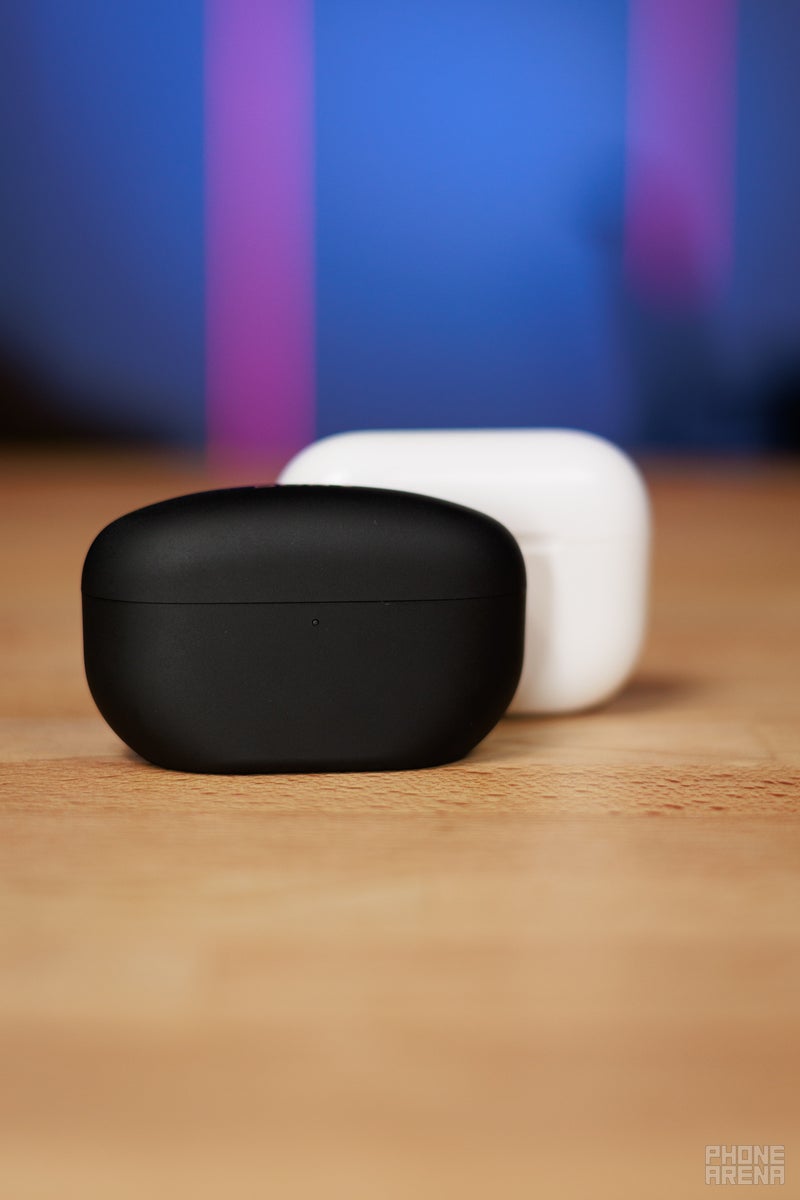

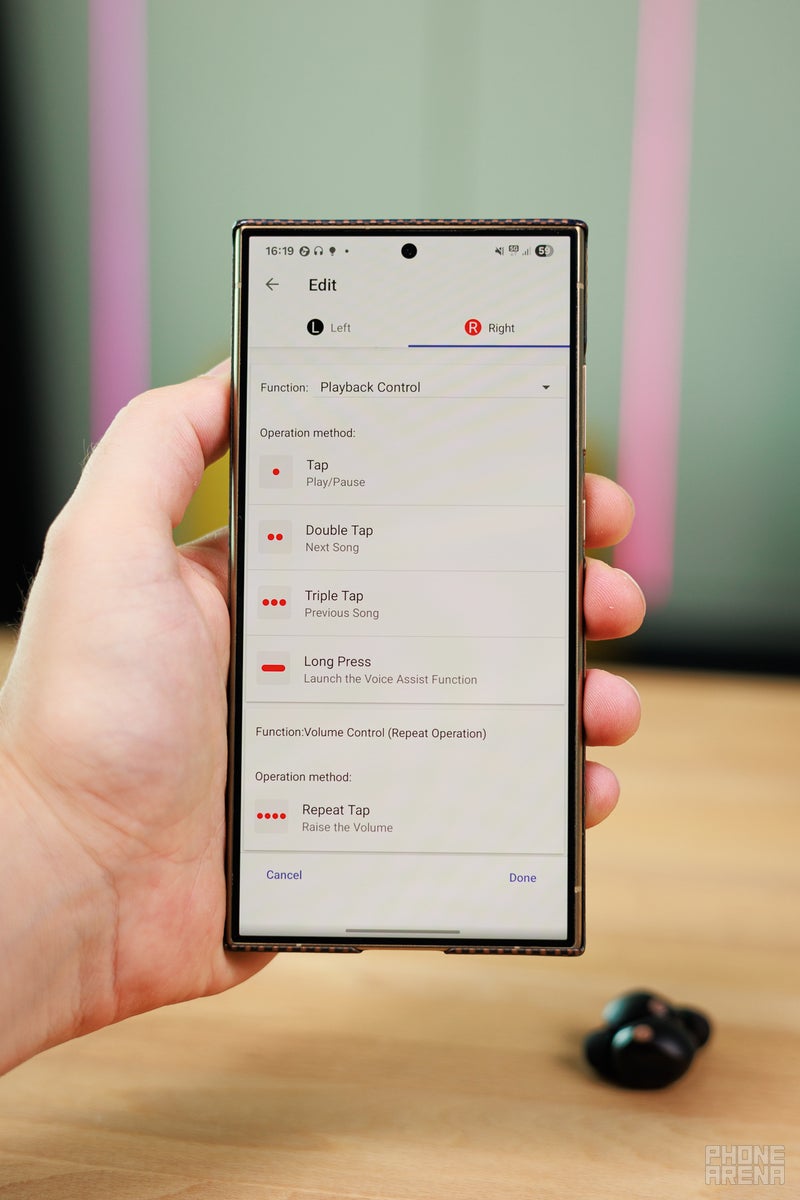


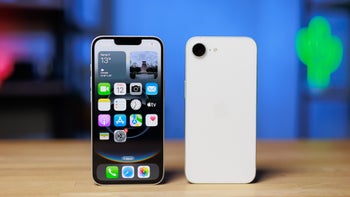

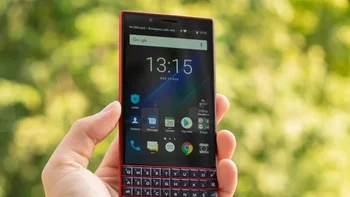

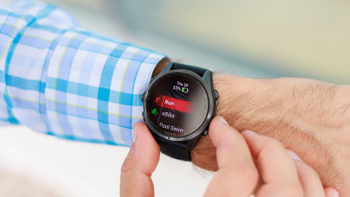




Things that are NOT allowed:
To help keep our community safe and free from spam, we apply temporary limits to newly created accounts: